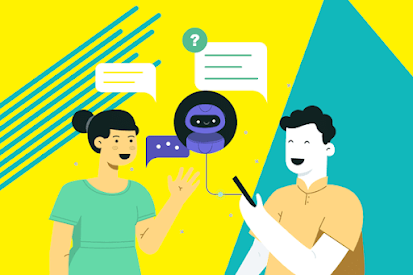Customer experience is driving business today. When it comes to customer service, you can't afford to make a mistake. With so much competition, people are ready to jump ship at the least hiccup in their experience. According to Microsoft, 90% of customers continue to place a high value on customer service quality when choosing or remaining loyal to a business. With the number of consumers rising in every company category, reducing customer service inquiries is an apparent method to improve customer experience.
To minimize customer support inquiries, you may enhance your product experience, and onboarding, and employ proactive customer success approaches. Among the advantages of minimizing customer demands are:
- Customers may rapidly conclude the product setup and move on to the next stage.
- A reduction in the frequency of client inquiries will allow support personnel to focus on more complicated problems, as well as learn and enhance the product.
- If the product provides a self-service portal or a robust knowledge base, the product setup and adoption rates will be high.
Repetitive enquiries (or FAQs) can account for 60-80% of all client requests, according to various statistics. As a result, eliminating recurring customer questions is a low-hanging fruit that may be used to improve customer experience and brand loyalty.
Let's have a look at some methods for reducing recurring client questions.
Instructions for Reducing Customer Service Queries
Teach Your Chatbot to Answer All Incoming Questions
More than 70%-80% of consumer queries should be handled by your
chatbot. Unless they are really sophisticated, chatbots can handle them. Continue training the chatbot by detecting unsuccessful chatbot dialogues.
Data from FAQs, emails, live chat, social media, and other channels may be used to teach the chatbot. With more data, your chatbot will be better able to answer a wide range of client inquiries.
Constantly feed new data into your chatbot.
You may check at your chatbot statistics to discover where the chatbots have failed, or what consumer questions the chatbot has moved to a person. Let's have a look at Kompose, Kommunicate's own chatbot builder. Similar steps apply to other platforms as well.
Follow the methods below to check for repeated requests and fill your chatbot with more:
1. Navigate to the analytics page of the Kommunicate Dashboard.
2. From the main menu, navigate to the Bots area.
3. Navigate to the Bot Messages subsection.
4. Choose the Fallback option, as illustrated below.
5. Examine the SENTENCE column. This column comprises user-asked queries to which the chatbot did not react. We need to think about these questions that may be posed in the future and which the chatbot will be unable to answer. We need to teach the chatbot to avoid such recurring requests and decrease support crew labour. You may collect this information and input it into your chatbot platform.
Here are the steps to enriching your chatbot with backup intent data to reduce recurring customer care enquiries.
Step 1: Select a legitimate inquiry that the chatbot did not answer.
In the above screenshot, the consumer inquires, "Is there a free package?" That example, the user is asking, "Is there a free plan?"
You can collect all pertinent queries that the chatbot was unable to answer.
Step 2: Enter these questions and responses into the chatbot.
Now, go to the chatbot creation portal and train the chatbot. The methods and screenshots below will assist you in training your Kompose chatbot.
To begin, go to the
Kompose-bot building platform and choose the chatbot from the dropdown menu, as seen in the image below. Now, under the ANSWER box, touch 'Enter' to add the training words along with the answer.
So that's how you can improve your chatbot. You can also link your Facebook pages and WhatsApp Business Account to the chatbot to gather data from all of your consumer communication channels.
Customer Self-Service and Knowledge Base
You must refresh your knowledge base with clear and simple content that customers can access. Customer self-service is a popular service method among millennials. They prefer to look for a solution to an issue by searching your website or using a search engine. In both circumstances, a well-maintained knowledge base may be extremely beneficial to both you and your clients.
The ideal method is to structure your FAQs or knowledge base articles into categories so that they can be readily browsed. Add recurring questions to the FAQ section/knowledge base and lead them to these pages as needed.
Consider the following example:
Videos for Troubleshooting
A few components of your product or service are tough to comprehend or adjust to. Perhaps they are prone to mistakes as a result of implementation/usage complexity. In such cases, delivering answers right away is the best option. This is where troubleshooting videos can help.
To decrease customer support inquiries, produce a brief video that explains the troubleshooting processes.
You may also collect the customer's pain points throughout the setup and make a small video to remedy those difficulties.
Finishing Up
You might minimise customer support inquiries and dramatically enhance customer experience by using the approaches listed above. You will be able to discover the key causes of the increase in customer complaints and then execute the aforementioned ways to manage them with the help of AI, analytics, and data-crunching technologies.








Comments
Post a Comment